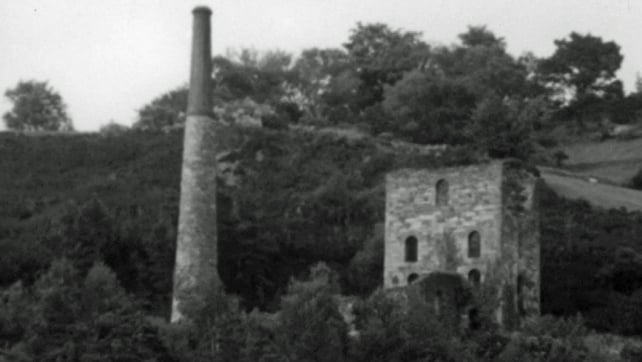Generations of extracting metals, minerals, stone and fuels have left an impact on Ireland's landscape.
'Irish Landscape' explores examples of the imprint left by mining on the island of Ireland from the Stoneage to the modern day.
Almost since man first arrived on our island he has dug into the earth and into the rock in his search for valuable materials. Stone-age man looked for flints in North Antrim; Bronze-age man sought copper in West Cork; in the eighteenth century gold was found in the Wicklow mountains, while modern machinery and methods have brought about the most extensive mining operations of all at the present time.
RTÉ Guide, 6 December 1968
From the modern day large scale shallow open cast mining carried out by Bord na Mona, to the mining activities in Ireland can be found on Mount Gabriel in West Cork where no less than twenty five old mines have been identified dating back to the Bronze Age. Many of these mines have been hidden for centuries under bogs and only became exposed when extensive turf cutting began in the last century.
We can be fairly sure that our ancestors were mining for copper on Mount Gabriel somewhere between twelve and thirteen hundred years before the birth of Christ.
The stone beehive cells or clocháns of the Dingle peninsula and Skellig Michael are examples of mining dating from early Christian times.
They are the igloos of a templed region in which loose rock slabs are plentiful. In the Arctic, compacted snow. In Ireland, flat stones.

Cornish Chimney
As mining became more common across Ireland, waste heaps, mine buildings and Cornish chimney stacks became prominent features of the landscape. Evidence of these is found in Avoca, County Wicklow."
The Coal Mines of Ballycastle in County Antrim, which only closed recently, is a good example of a drift mine.
In the 1950s, the introduction of sophisticated techniques of geochemical and geophysical surveying have located new ore bodies which were unknown to previous generations of miners.
An open cast mine at Tynagh in County Galway is producing lead, zinc and silver using modern, earth-moving equipment and are handling two thousand tonnes of the black mineralised muds every day. The various metals are separated by modern floatation techniques.
Tynagh today is the greatest single producer of silver in Europe having produced over two million ounces in the past year.
Quarrying for limestone involves exploiting the glaciated features of the landscape.
This episode of 'Irish Landscape' was broadcast on 12 December 1968. The presenter is David Timlin.
'Irish Landscape' was a series exploring the many factors contributing to the landscape in which we live.


























